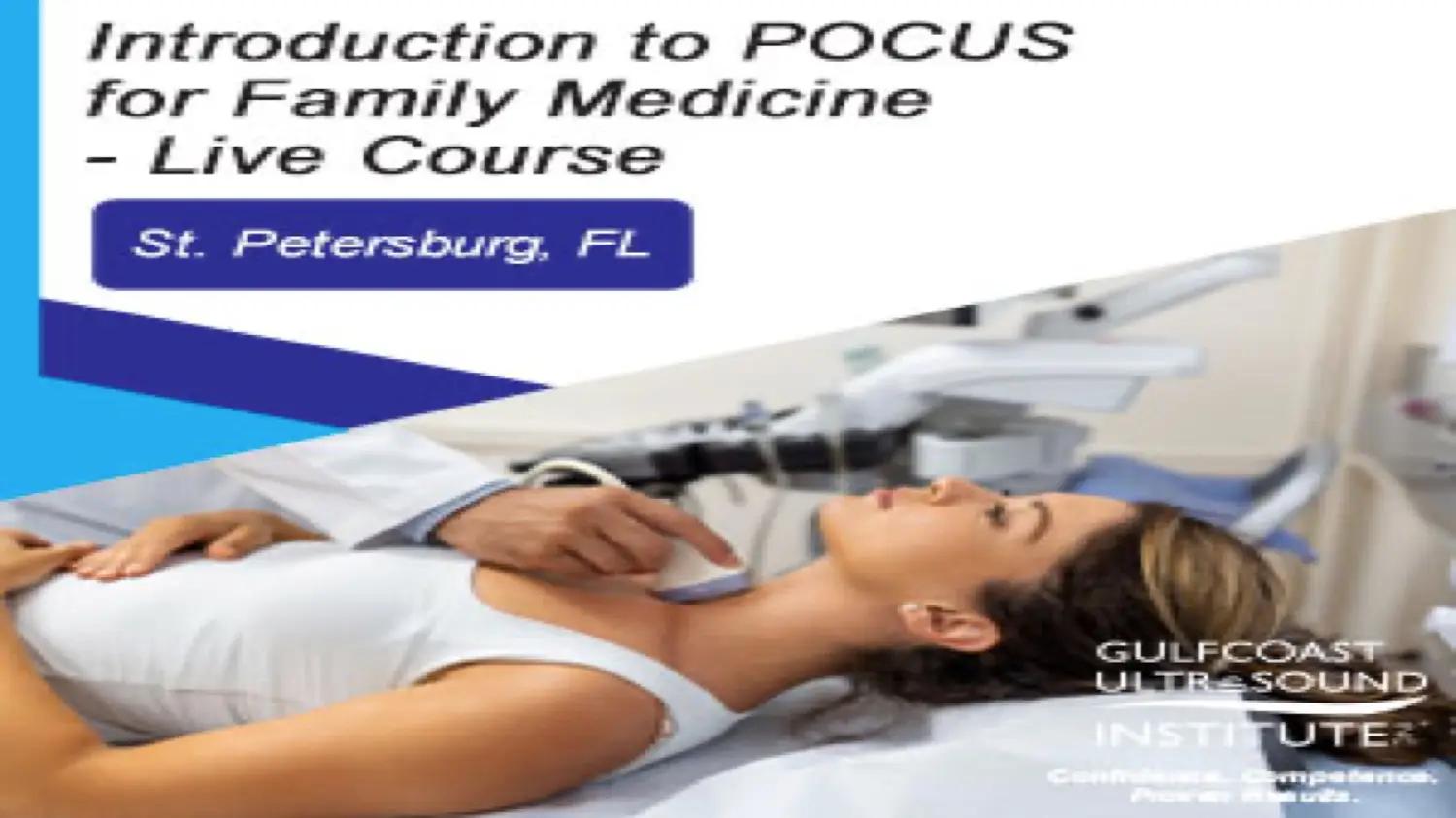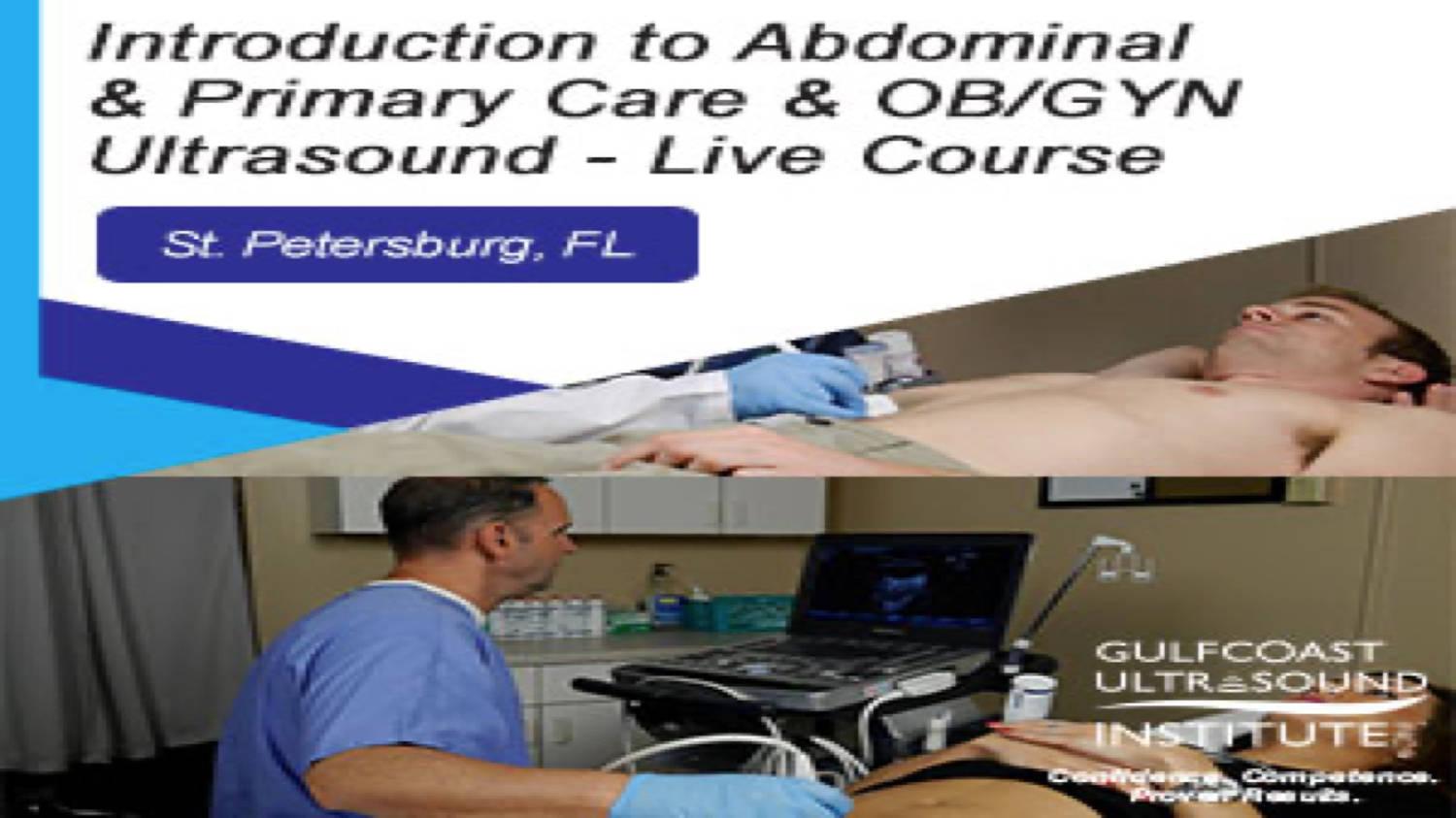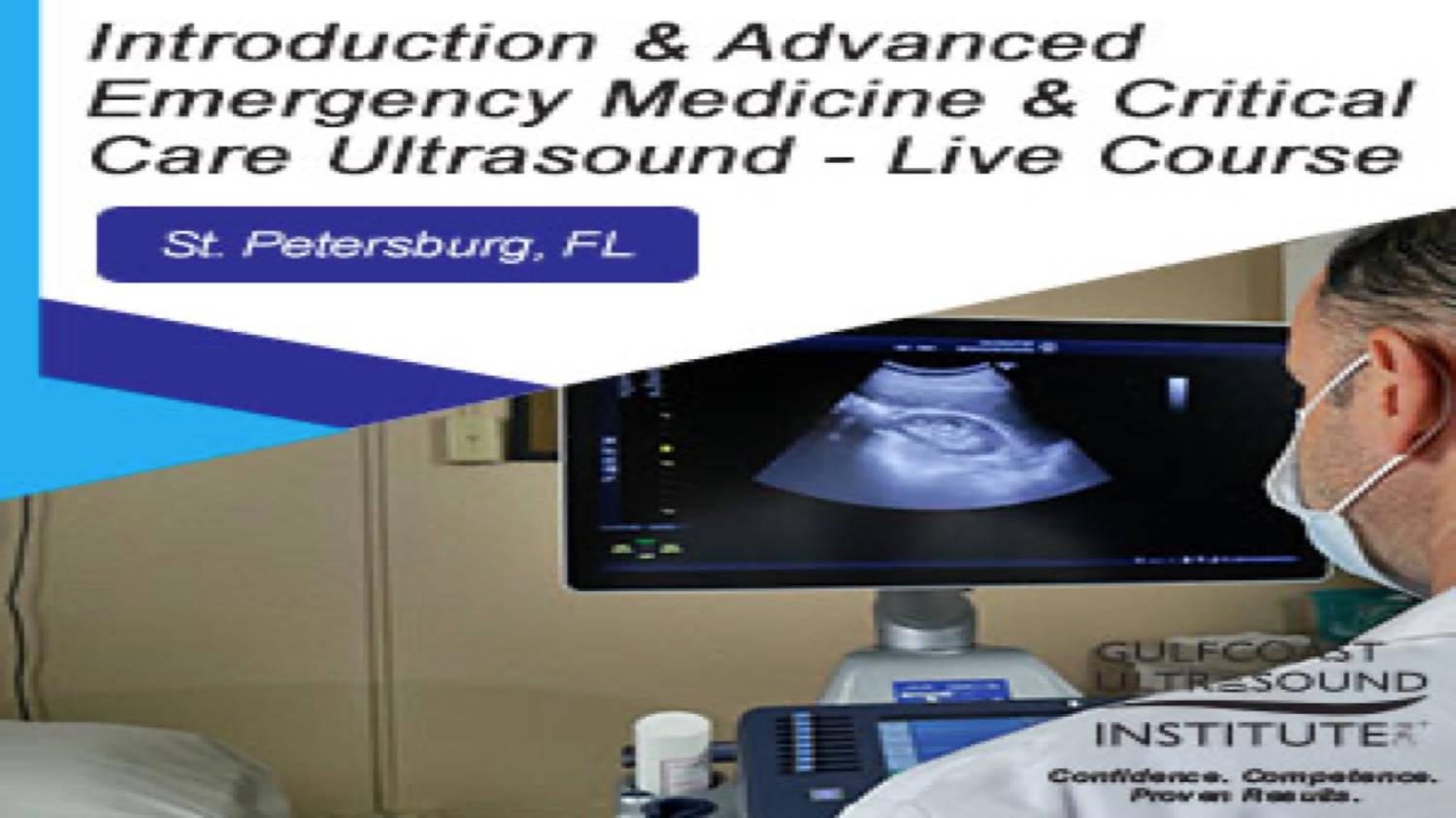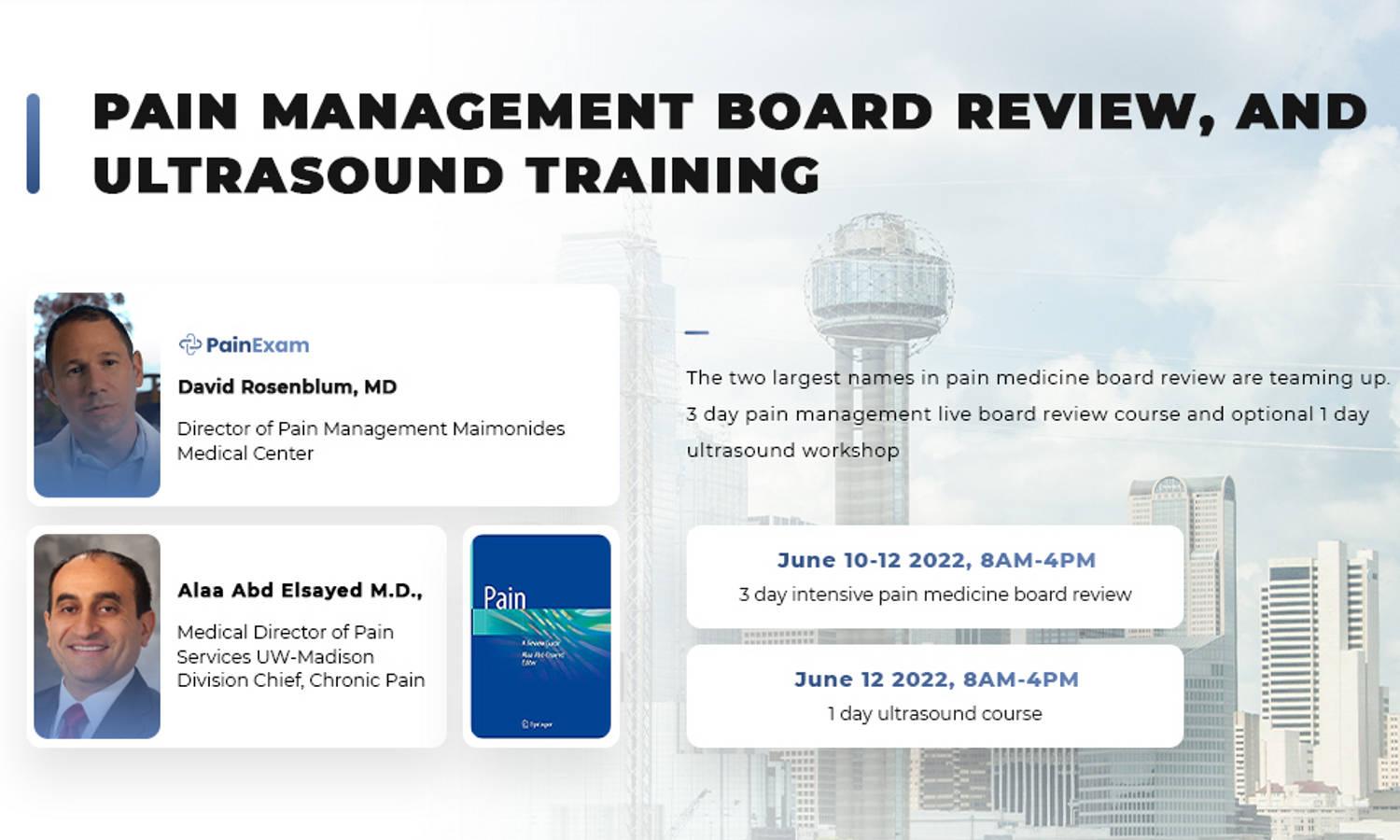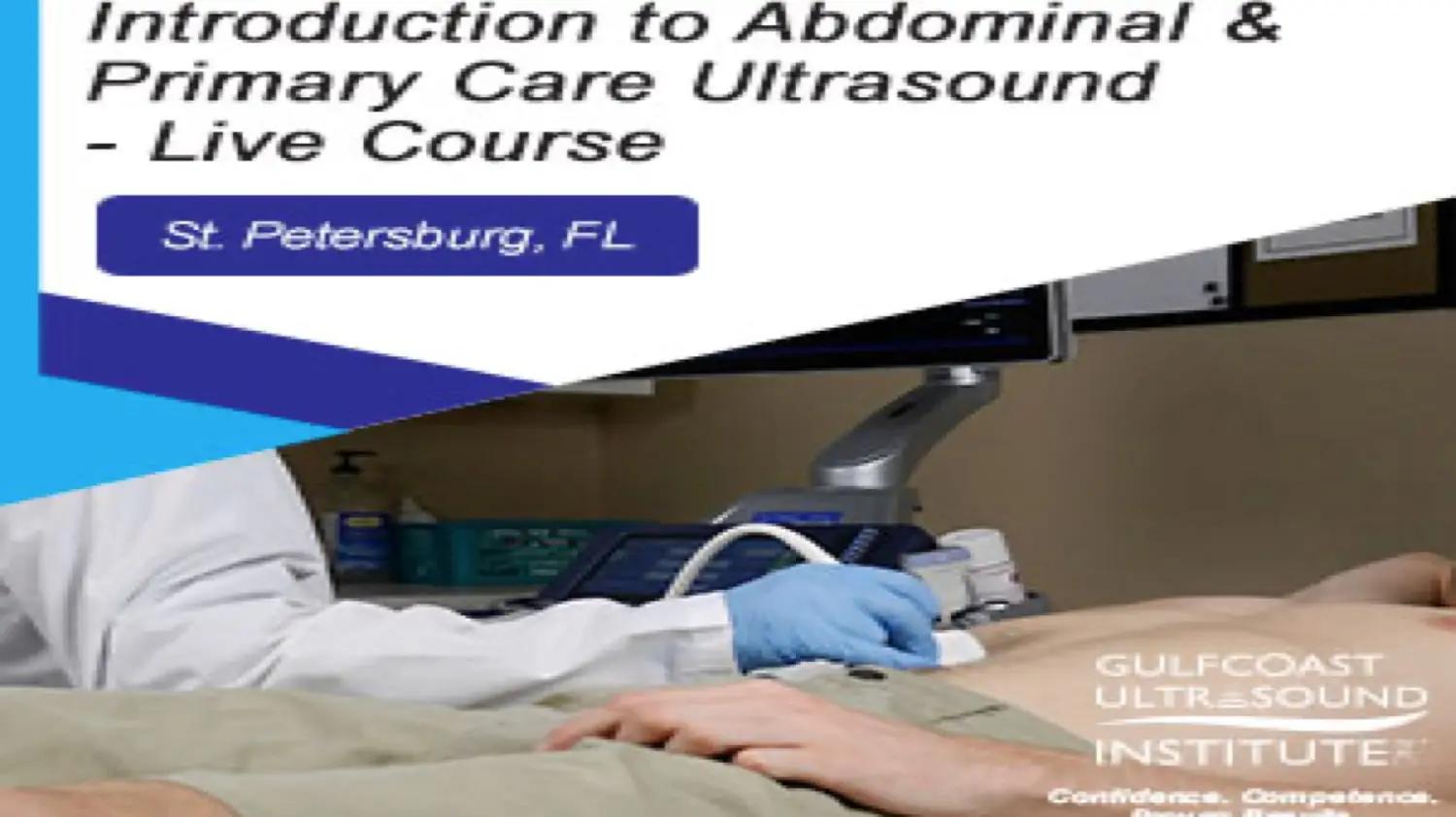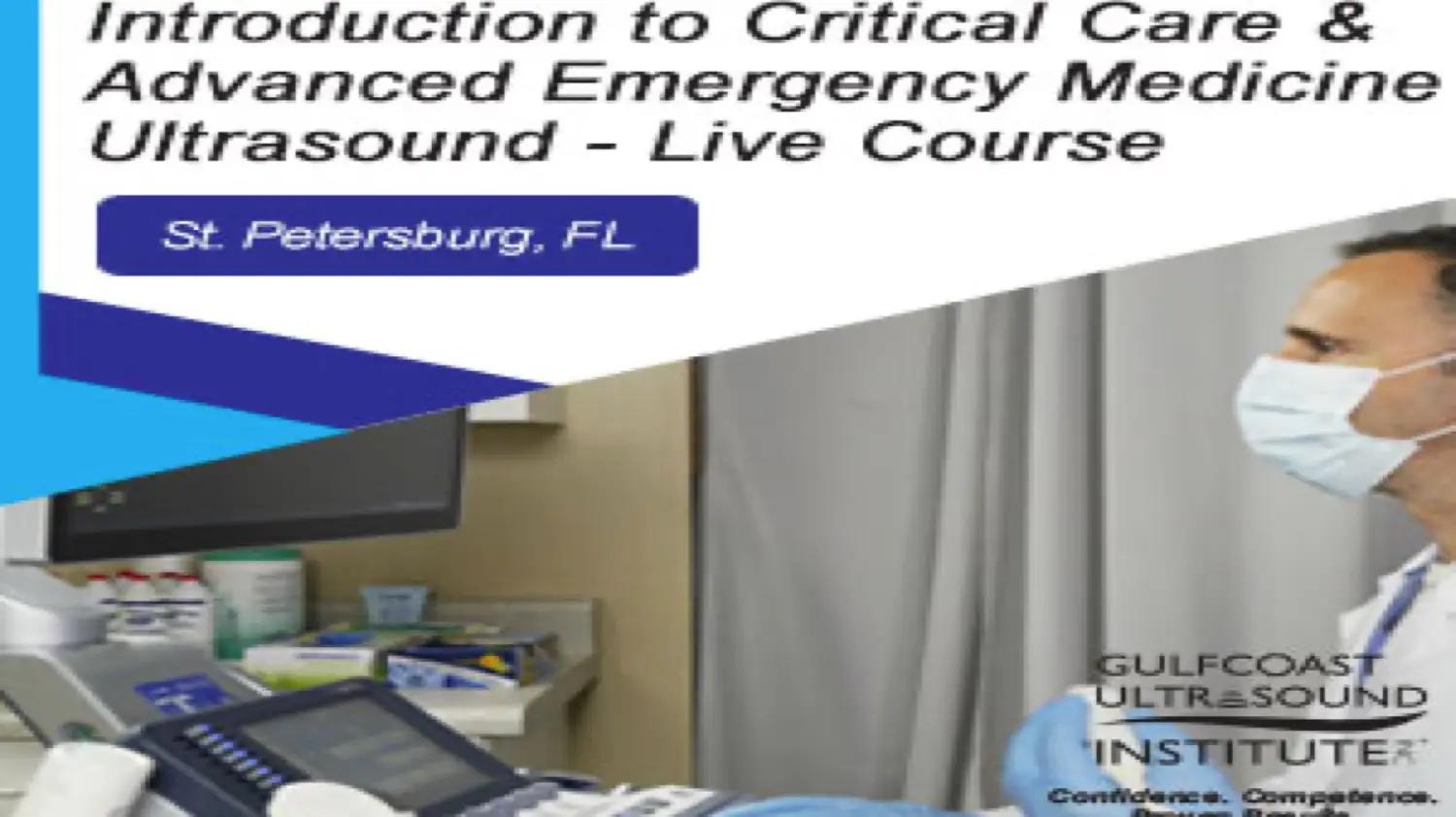
POCUS Abdominal Trauma Certificate Review
POCUS Abdominal Trauma Certificate Review is organized by Gulfcoast Ultrasound Institute (GCUS) Inc..
Date of Original Release: 2/27/2023
This edition is valid for credit through 2/27/2026
1 year/365 days of Unlimited Access from the date of purchase. Expires on 10/31/2024 if purchased today.
Description:
POCUS Abdominal Trauma Certificate Review Online Course is specifically designed for any medical professional (Physician, Advanced Practice/Mid-level Provider, Sonographer, etc.) who has an interest in earning the POCUS Abdominal Trauma Certificate and integrating/performing point-of-care Abdominal Trauma ultrasound examinations in clinical practice. The POCUS Certificates and Certifications are NOT just for physicians!
• The Online Review Course covers all concepts pertaining to the POCUS Abdominal Trauma Certificate Clinical Case Assessment and is designed to streamline the process of successfully earning your POCUS Abdominal Trauma Certificate:.
• This self-directed course contains five (5) comprehensive modules comprised of online video lectures, case presentations, and post-activity quizzes in Gulfcoast Ultrasound Institute’s structured, easy-to-use online Learning Management System.
• 12 months (365 days) of unlimited access is provided from the date of purchase, and 6.0 AMA PRA Category I Credits™ are optional for an additional CME processing fee.
• This online review course will help reinforce a strong foundation to perform the core ultrasound applications as outlined in the ACEP, WINFOCUS, and ACR ultrasound practice guidelines and is taught by leading point-of-care ultrasound expert faculty.
If you want to earn your POCUS Abdominal Trauma Certificate and become one of the leaders in Point of Care Ultrasound, this Online Review Course will provide you the best value, knowledge base, and assessment review available anywhere!
Learning Objectives:
• Outline the interaction of sound with soft tissue and other mediums.
• Demonstrate the relationship between system controls and image quality.
• Select the appropriate type of transducer for each respective clinical application.
• Identify different types of imaging artifacts.
• Define Doppler ultrasound and list the different types of instrumentation.
• State the indications for integrating Doppler ultrasound for POC applications.
• List anatomical landmarks of the abdomen.
• State transducer scan planes and relational anatomy.
• Outline the sectional anatomy of the abdomen.
• Identify vasculature, organs, and potential spaces.
• Recognize the normal size, echogenicity, and texture of the abdominal organs.
• Increase the participant’s knowledge and competence to perform and/or interpret trauma ultrasound examinations.
• State the imaging views and the ultrasound characteristics of the anatomy evaluated when performing trauma ultrasound.
• Recognize ultrasound characteristics associated with hemoperitoneum, hemopericardium, hemothorax, and pneumothorax.
• Perform ultrasound evaluation of pneumothorax.
• Increase confidence to incorporate protocols, techniques, and interpretation criteria to improve diagnostic/treatment accuracy involving abdominal trauma patients.
• Recognize free fluid when performing the E-FAST exam.
• Define the benefits and pitfalls of trauma ultrasound.
• Evaluate for free intraperitoneal fluid, pericardial effusion, pleural effusion, and pneumothorax in a trauma patient.
• Estimate central venous pressure using inferior vena cava measurements.
• Demonstrate how to measure and evaluate an aortic aneurysm.
• Increase confidence to incorporate protocols, techniques, and interpretation criteria to improve diagnostic/treatment accuracy involving abdominal trauma patients.
Topics:
• Sound Generation and Basic Principles
• Transducers
• System Controls & Image Quality
• Imaging Artifacts
• Doppler Principles
• The Doppler Equation
• Effects of Doppler Angle
• Doppler Instrumentation: Pulsed Wave, Continuous Wave, color Doppler, and Power Doppler
• Doppler Applications in Point of Care Settings
• Doppler/Color Controls and how to Optimize
• Commonly Seen Doppler and Color Artifacts
• Abdominal Scanning Fundamentals
• Ultrasound in Trauma (E-FAST)
• Lung Ultrasound (included with trauma ultrasound)
• Cases in Trauma
Additional details will be posted as soon as information is available.


